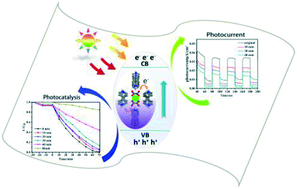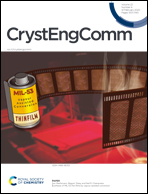Photochromic inorganic–organic complex derived from low-cost deep eutectic solvents with tunable photocurrent responses and photocatalytic properties†
Abstract
Growing interest in photochromic materials has largely stimulated researchers in this field to synthesize inorganic–organic materials that are composed of photochromic molecules such as viologen derivatives, naphthalene diimide (NDI) derivatives, and diarylethene derivatives. However, the requirement of an elaborate structural design, complicated synthesis, and high cost remain the issues that need to be addressed before the photochromic materials can be accepted by the market. Their synthesis using low-cost deep-eutectic solvents (DESs) may offer new opportunities to provide cost-effective reaction routes for large-scale synthesis of photochromic materials. We present a multifunctional photochromic inorganic–organic complex |C10H10N2|[GaF(C2O4)2], which is constructed from a nonphotochromic 4,4′-bipyridine ligand and oxalate derived from low-cost DES components. The complex exhibits intriguing photochromic behavior with a wide range of photo-response from UV to visible light and an ultralong-lived charge-separated state. Moreover, it possesses unprecedented tunable photocurrent responses and photocatalytic properties.



 Please wait while we load your content...
Please wait while we load your content...